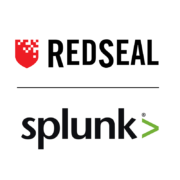RedSeal CEO Ray Rothrock Says Academic Incubators Help Hone Great Ideas and Leaders at SXSW Panel
As VC, Rothrock Backed Mark43 at Harvard’s iLab
Sunnyvale, Calif.– Today RedSeal (www.redseal.net) CEO Ray Rothrock joined Michael K. Young, President of Texas A&M University, and Jodi Goldstein, Managing Director of the Harvard Innovation Lab at Harvard University, for a panel discussion on academic incubators at South by Southwest (SXSW).
Rothrock, a former managing partner at Venrock, the investment arm of the Rockefeller family, shared his experience working with the academic incubator Harvard Innovation Lab. Rothrock held office hours at Harvard’s iLab, and met with students from Harvard College, Harvard Business School, and the Massachusetts Institute of Technology. He listened to ideas, made some investments, assisted students with business plans and pitches, and even connected students with other investors who might have an interest in their business ideas.
“I invested in three ideas during my time at iLab. One of my investments was Mark43. The team consisted of three graduating seniors from Harvard’s Electrical Engineering program who had a law enforcement idea; traditionally a difficult area for VC money. They graduated, honed the software, and today it is a fast growing company based in NYC,” said Ray Rothrock, chairman and CEO of RedSeal. “They probably could have been successful without me, but the networking and support from the iLab was tremendous.”
Rothrock said “successful academic incubators are more than just bricks and mortar, but places where ideas come at a fast rate, and get honed and vetted through a large number of smart, interested, involved people.” According to Rothrock “just a few great deals start in incubators, but the people who start great companies often pass through an incubator along the way.”
The significance of building a cyber incubator to explore solutions and capabilities was also discussed by Rothrock during the panel discussion.
“Cyber requires not only deep skills and knowledge about networks, but also social engineering and psychology. Those skills are usually not found in one person, so it’s essential for teams to form in order for these successful ideas to mature. A cyber incubator would provide a space for multidisciplinary teams to refine these ideas,” said Rothrock.
The panel discussion explored how academic incubators are helping universities and colleges to become more competitive and attractive, and therefore better able to retain talented students and faculty. The South by Southwest® (SXSW®) Conference & Festivals celebrates the convergence of the interactive, film, and music industries.


